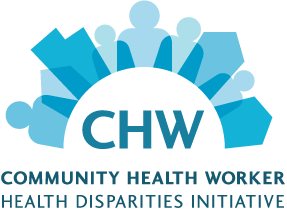The NHLBI and the Indian Health Service Develop Honoring the Gift of Heart Health
Success Factors
Collaborated with key stakeholders on all parts of the program – from writing to editing to training.
Ensured flexibility and adaptability of all program materials.
Committed partners for widespread training and evaluation.
Overview
American Indians and Alaska Natives have some of the highest rates of heart disease, smoking, and diabetes in the country. Combining their resources, expertise, and commitment to reducing health disparities, in 2003 the NHLBI and the Indian Health Service (IHS) developed Honoring the Gift of Heart Health (HGHH), an evidence-based manual and training program for American Indian/Alaska Native communities.
Implementation Strategies
HGHH’s focus was on capacity building and community mobilization in tribal communities. It also included intensive education for community and tribal health care workers on heart disease prevention. The NHLBI and IHS held a national training workshop in 2003 and six regional trainings from 2004 through 2006. Nationwide, enthusiasm for HGHH resulted in many local-level training efforts around the country, lasting through 2010. The widespread training had another positive outcome: the creation of a core group of trainers and educators who were prepared to lead heart health education classes and program activities in their own communities.
The new HGHH manual was first piloted in New Mexico. After some revisions, the NHLBI and IHS widely distributed the materials, along with a coordinated training strategy. Key users of HGHH include community health representatives (CHRs), disease prevention and health promotion professionals, diabetes educators, nutritionists and dietitians, and health educators.
Case Studies
Pueblo San Ildefonso, New Mexico
In Pueblo San Ildefonso, NM, a team composed of CHRs, health and wellness/diabetes program staff, a youth coordinator, and a lay community member conducted a HGHH program for youth and adults in the community. The class met twice a week for five weeks, instead of the usual 10-week program. The flexibility of the HGHH manual allowed the team to change the program’s length to meet the community’s needs. The team also incorporated local traditions into the HGHH program. By recognizing and including the community’s youth as “young leaders,” the HGHH team at Pueblo San Ildefonso succeeded in inspiring the program’s participants to spread health and wellness messages to families and peers throughout the community.
Catawba Healthy Senior Hearts Project, South Carolina
At the Catawba Senior Center on the Catawba reservation, a registered dietitian and CHR (from the IHS Catawba Service Unit) implemented HGHH as part of a healthy seniors program. Making the program as convenient as possible for the participants was a key factor for success. Instead of holding classes at the clinic, the HGHH team brought the program to the senior center so that participants could easily attend. Additionally, HGHH classes were scheduled when senior center attendance was highest: after lunch on bingo day. This proved to be an excellent strategy for retaining participants. Information about heart healthy eating was presented in hands-on cooking demonstrations and in-depth discussions. The recipes and lesson plans integrated tribal traditions. HGHH remains one of the most popular and well-received programs held at the senior center.
Key Results/Outcomes
The NHLBI’s and IHS’s collaborative approach has resulted in a program that has been well received by tribal communities and used widely across Indian Country. Its popularity can be credited to the following factors:
- Participants appreciate the professional quality of the materials.
- Participants report that the activities are fun and are flexible enough to be modified for different tribes.
- Activities and materials are adaptable, enabling sites to change the manual’s length, incorporate various cultural traditions, and modify activities.
Last Updated: June 2014







